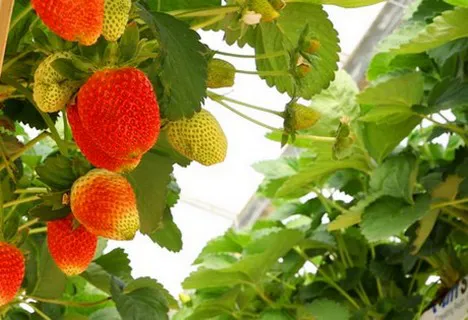North American berry growers are facing a bright but challenging future. The demand for locally grown products keeps increasing, and with drought and other weather-related problems looming, production is shifting across the continent.
Berries are a hot topic. Several studies show that they have continued to increase in popularity, and every now and then new and existing companies announce an expansion of production. In Europe for example, where the strawberry was one of the fastest growing glasshouse crops over the last five years. Dutch, Belgian and other open field strawberry growers expanded into greenhouses for winter production, but also growers of other greenhouse crops like peppers made a transition into protected cultivation of strawberries.
While not as fast as in Europe, the North American acreage with berries is also undergoing transformation. Mexico is a rapidly upcoming producer with large players investing in undercover production. Other opportunities are a result of extreme weather in Florida and California.
Ontario Berry Growers Association Executive Director Kevin Schooley also sees some of their growers moving towards protected cultivation. The Executive Director of the North American Strawberry Growers Association says that, while not as quickly as in Europe, acreage is added to produce off-season and local. "Our members are mainly open field growers. Over the last three to five years we notice some of them trying out new production systems like low tunnels and high hoop systems."
Schooley explained that this enables the growers to meet the growing demand for locally grown products. Consumers want to buy a fresher and better quality product and therefore demand local. This provides room for more production to replace strawberry imports from California, Mexico and Florida. "Field production in these areas has a lower cost, but buyers are willing to pay a premium for locally grown."
As a result of this, North American greenhouse vegetable growers like Mucci, Orangeline and Mastronardi added strawberry production too. These growers invested in new glasshouses or transformed existing structures into strawberry greenhouses. "We see this as a good thing, also here the demand for local is a driving force."
Schooley foresees a good future for the berry industry. "While not at a rapid pace, the demand for berries is continuously increasing. There is interest enough for a bright future."

In order to keep up with new production techniques and discover new opportunities, the North American Strawberry Growers frequently organize conferences and events. In August the group will organize a summer tour to visit the Minnesota and Wisconsin berry industry. Later this year the group hopes to tour Europe to see how their colleagues are taking advantage of markets and technologies.
Click here to find out more.

 In order to keep up with new production techniques and discover new opportunities, the North American Strawberry Growers frequently organize conferences and events. In August the group will organize a summer tour to visit the Minnesota and Wisconsin berry industry. Later this year the group hopes to tour Europe to see how their colleagues are taking advantage of markets and technologies. Click here to find out more.
In order to keep up with new production techniques and discover new opportunities, the North American Strawberry Growers frequently organize conferences and events. In August the group will organize a summer tour to visit the Minnesota and Wisconsin berry industry. Later this year the group hopes to tour Europe to see how their colleagues are taking advantage of markets and technologies. Click here to find out more. 